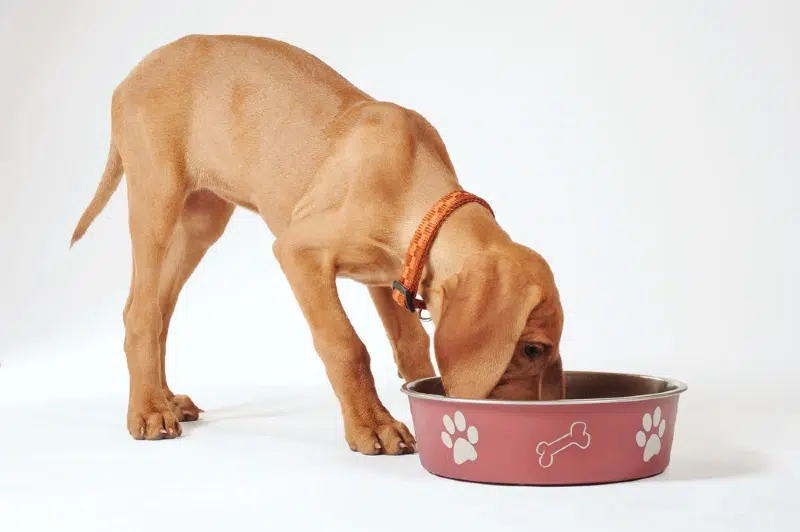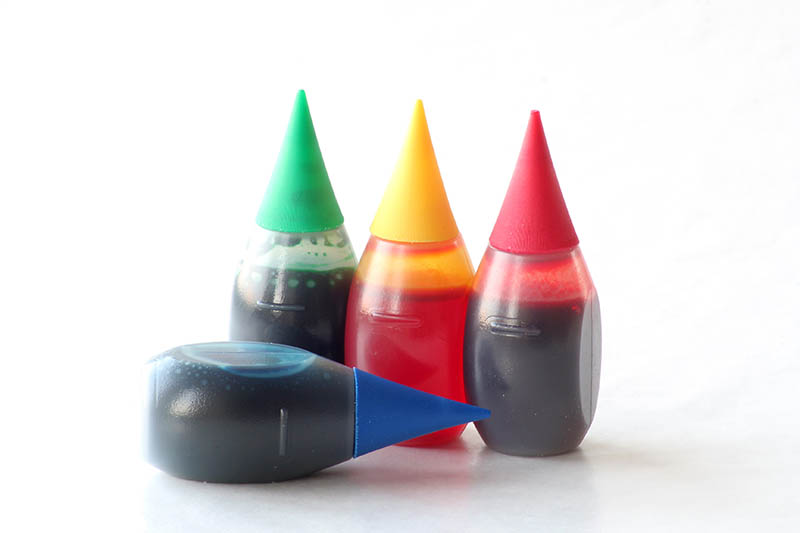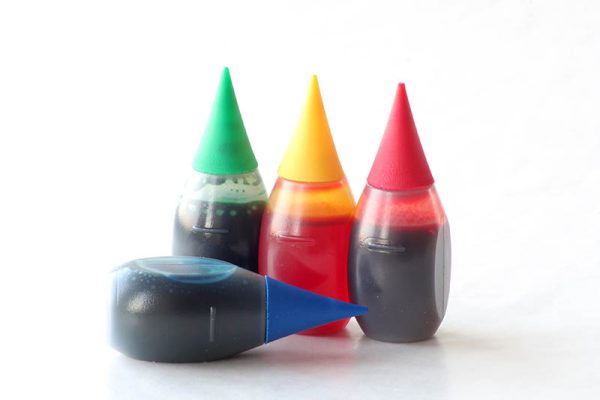Click to Skip Ahead
Food coloring is an ingredient used to make pet food more appealing by visually recreating the look of meats like beef (red), chicken (golden yellow), and vegetables (green), but is it actually safe? The general and basic consensus is that FDA-approved colors should be safe in pet food, but the detailed answer is a little murkier.
Food coloring in formulas is a controversial topic in the dog world, so, in this post, we’ll walk you through what experts have to say and explore the history of food coloring.

What Is Food Coloring Made From?
The first type of food coloring is natural. Natural food coloring is derived from fruits, vegetables, and spices, including blueberries, strawberries, turmeric, paprika, and beet juice. Some dog parents choose to go with dog food brands that only use natural dyes in their formulas, simply because they feel more comfortable with this, unless, of course, the dog is allergic to one of the ingredients.
The second type of food coloring is synthetic. These colorings are often synthesized from petroleum and are the ones most controversial today. Further down, we’ll explain why this is the case.

Food Coloring History
Synthetic dyes have long been ensconced in controversy, likely due in no small part to their history. To give you a bit of background, in the late 19th century, food dyes were often used in fresh foods to hide the fact that they were spoiling, and even contained dangerous toxins, including mercury and arsenic.
By the early 20th century, these colorings had been banned, but coal-tar dyes continued to be used until the 1950s when they were also found to make people sick. The 1960s marked a new era, one in which food colorings were more carefully regulated. Today, the FDA stringently regulates which food colorings can be used in foods and the amounts that can be used.
The FDA, which regulates pet food as well as human food, approves only certain synthetic food colorings, which are:
- FD&C Blue No. 1
- FD&C Blue No. 2
- FD&C Green No. 3
- Orange B
- Citrus Red No. 2
- FD&C Red No. 3
- FD&C Red No. 40
- FD&C Yellow No. 5
- FD&C Yellow No. 6
Are Synthetic Food Colorings Safe in Dog Food?
We’d love to give you a straight “yes or no” answer to this question, but, unfortunately, there isn’t one. FDA-approved food dyes in approved amounts are claimed (by the FDA) to be “generally recognized as safe” in dog food, but, again, this is a controversial topic, especially since there hasn’t been much research into the effects of food dyes on dogs and cats.
Tests have mostly been conducted on rats and mice, and reports suggest that FDA-approved dyes have been linked to tumors, allergies, and hypersensitivity in these small mammals. The same report also detailed how some dyes have been linked to the same issues in humans and, possibly, hyperactivity in children and teenagers, though this is uncertain.
The report concludes that these dyes should be banned, especially since their purpose is cosmetic rather than nutritional. In turn, the FDA has argued that there is not enough evidence to support the outlawing of synthetic dyes. Furthermore, proteins in dog food are known to be the most common allergens in dogs that experience food-related allergic reactions, and food dye doesn’t contain these proteins.
In brief, more research would be required for us to be able to fully understand the potential effects of food coloring on dogs and cats.

Does Food Coloring Offer Any Nutritional Value?
No, none whatsoever. Food coloring is added to dog foods to appeal more to the owner than the dog because the rendering process in pet food production can discolor the food. Pet parents don’t want to see their dog’s food in a murky gray color, so the food dye makes it look more like actual food. For example, a beef-flavored food may contain red dye to recreate the real look of beef.
Another reason is that, in some cases, the food produced can vary color-wise, and manufacturers use food dyes to ensure each batch looks identical.

Conclusion
In the modern world, many people are becoming more and more scrutinous when it comes to the ingredients that go into their fur babies’ food formulas and, as a result, are leaning more towards options labeled “natural”. This is understandable given the long-standing controversy surrounding food dyes. Nevertheless, the FDA continues to label approved dyes as “generally safe”.
When it comes to whether or not you should feed your dog formulas containing FDA-approved food dyes, it’s really up to you to make a decision based on what you feel comfortable with, what food is recommended by your veterinarian, and what is best for your dog.
Featured Image Credit: Scott Bolster, Shutterstock











